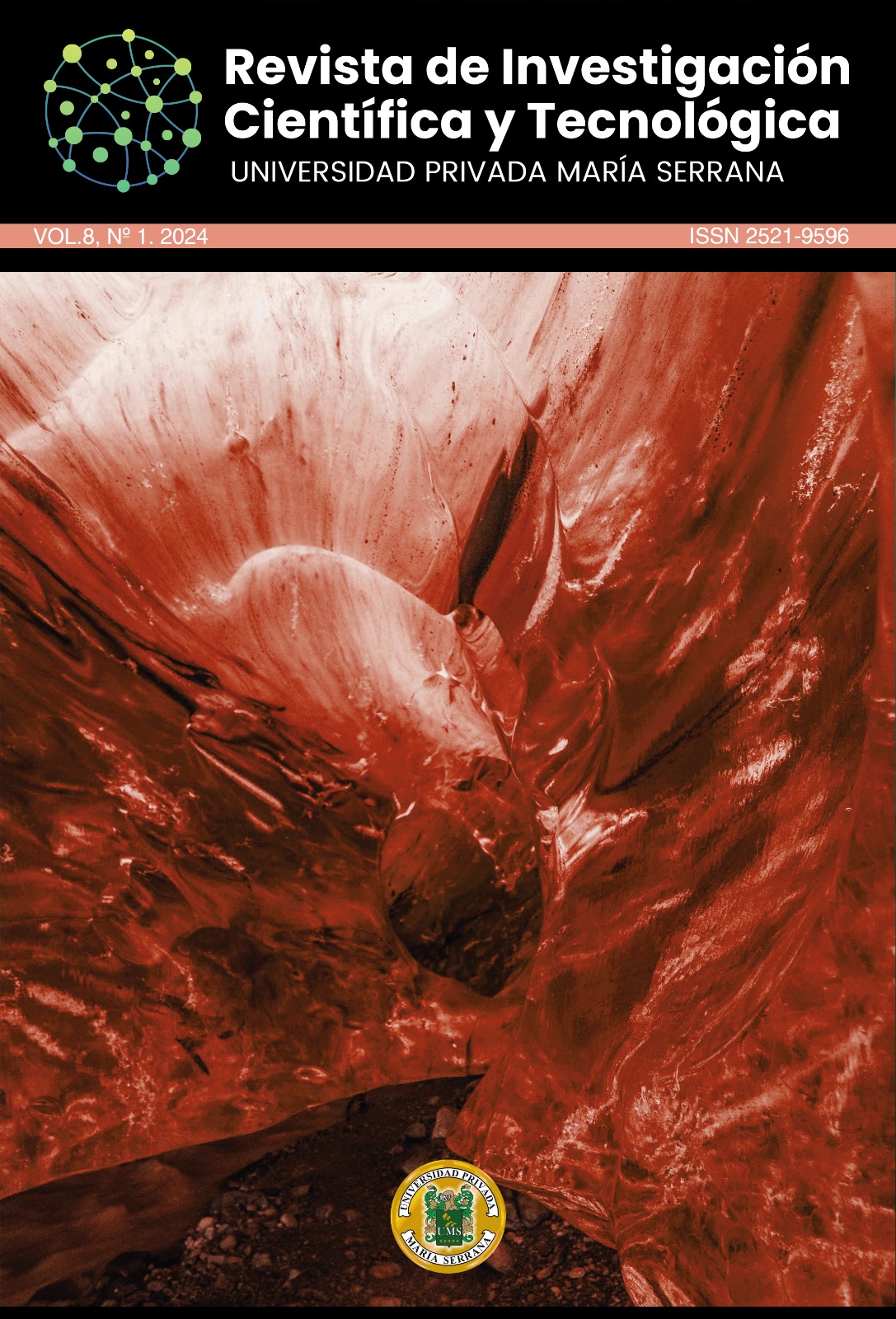Abstract
Cardiovascular diseases are currently the leading cause of death worldwide. High blood pressure is one of the pathologies that cause these diseases. By 2019, 1.3 billion people suffered from this condition. Two phytotherapeutics for daily use in Paraguay were selected: Espina Colorada or Ñuati pytã (Guarani language), Solanum sisymbrii- folium (in scientific nomenclature) and Coco, Mbokaja ra’y rapo (in Guaraní language), Acrocomia aculeata (in scientific nomenclature).The Redalyc, Scielo and NCBI libraries were consulted, using the sisymbriifolium descriptors for “Espina Colorada”; already. acuelata, for the search for “acromia aculeata”. The term sisymbriifolium was found in 10 articles in SCIELO, 61 in Redalyc and none in NCBI. With the term “a. aculeata” were found 25 in Redalyc, 10 in SCIELO and none in NCBI. In the reviewed bibliogra- phy, no scientific evidence was found with clinical, physiological and/or pharmacoki- netic data of active ingredients of Acromia Acuelata or Solanum sisymbriifolium that confirm antihypertensive activity.
References
Argüello Mejía, A. (2016). Palmas medicinales usadas en el Nuevo Mundo. Enfoque UTE, 7(1), 91-110. https://doi. org/10.29019/enfoqueute.v7n1.90
Baharvand-Ahmadi, B., Bahmani, M., Tajeddini, P., Rafieian-Kopaei, M., & Naghdi, N. (2016). An ethnobotanical study of medicinal plants administered for the treatment of hypertension. Journal of Renal Injury Prevention, 5(3), 123–128. https://doi.org/10.15171/jrip.2016.26
Carballo, M. A., Cortada, C. M., & Gadano, A. B. (Eds.). (2005). Riesgos y beneficios en el consumo de plantas medicinales (Vol. 14, Número 2). Theoria. https://documents.pub/documents/riesgos-y-beneficios-en-el-consumo-de-plantas-medicinales.html
Chukwuma, C. I., Matsabisa, M. G., Ibrahim, M. A., Erukainure, O. L., Chabalala, M. H., & Islam, M. S. (2019). Medicinal plants with concomitant anti-diabetic and anti-hypertensive effects as potential sources of dual acting therapies against diabetes and hypertension: A review. Journal of Ethnopharmacology, 235, 329–360. https://doi.org/10.1016/j. jep.2019.02.024
Coutiño, B., Rodríguez, R., Belmares, R., Aguilar, C. N., & Ruelas, X. (2016). Selección de la bebida “taberna” obtenida de la palma Acrocomia aculeata y análisis químico proximal. MULTICIENCIAS, 15(4), 14. https://www. semanticscholar.org/paper/46771d297f8cf0fe22622a2d282b8e4c2b1dbfec
Degen de Arrúa, R., & González, Y. (2014). Plantas utilizadas en la medicina popular paraguaya como antiinflamatorias. Boletín Latinoamericano y del Caribe de Plantas Medicinales y Aromáticas, 13(3). https://www.blacpma.usach.cl/sites/ blacpma/files/002_revision_1.pdf
Figueiredo, G. G., Coronel, O. A., Trabuco, A. C., Bazán, D. E., Russo, R. R., Alvarenga, N. L., & Aquino, V. H. (2021). Steroidal saponins from the roots of Solanum sisymbriifolium Lam. (Solanaceae) have inhibitory activity against dengue virus and yellow fever virus. Brazilian Journal of Medical and Biological Research, 54(7). https://doi.org/10.1590/1414-431x2020e10240
Hiane, P. A., Baldasso, P. A., Marangoni, S., & Macedo, M. L. R. (2006). Chemical and nutritional evaluation of kernels of bocaiuva, Acrocomia aculeata (Jacq.) Lodd. Food Science and Technology, 26(3), 683–689. https://doi. org/10.1590/s0101-20612006000300031
Jonathan, A. J., Mohammadnezhad, M., & Raikanikoda, F. (2023). “I think taking herbal medicine first can help prevent. If it doesn’t work, then can take start taking the medication given by the doctors.” Patients’ perceptions towards hypertension in Fiji. PloS One, 18(8), e0285998. https://doi.org/10.1371/journal. pone.0285998
Martínez, G. J., Arenas, P., & Barboza, G. (2007). LAS SOLANÁCEAS EN LA ETNOBOTÁNICA MÉDICA DE LOS TOBAS DE LA REGIÓN DEL CHACO CENTRAL. Boletín latinoamericano y del Caribe de plantas medicinales y aromáticas, 6(5), 205–206. https://www.redalyc. org/articulo.oa?id=85617508039
Martínez, G. J. (2011). Uso de plantas medicinales en el tratamiento de afecciones transmitidas por el agua en una comunidad toba (qom) del impenetrable (chaco, ar Gentina): Una perspectiva etnoecolóGica y sanitaria. BONPLANDIA, 25.
Murillo, R. V. (2019). Contenido de ácidos grasos del aceite de los frutos completos, semillas y pulpas de la palma Syagrus romanzoffiana. https://www.semanticscholar.org/paper/6464f44cb02e7b12a4e2d925176c1aaeb77585cf
Novak, A., Yubero, F., Diez-Perez-Nuñez, D., Fertonani, F. L., Britez, B. G. D. S., & Gonzalez, Y. (2021). Bioadsorption of lead(II) over the pulp of Acrocomia aculeata. Eclética Química Journal, 46(4), 38–46. https://doi.org/10.26850/1678-4618eqj.v46.4.2021.
Puentes, J. P. (2019). Plantas medicinales hipotensoras y sus productos comercializados en el Área Metropolitana de Buenos Aires, Argentina. Bonplandia, 28(2), 117–133. https://doi.org/10.30972/ bon.2823854
Ramos, M. I. L., Ramos Filho, M. M., Hiane, P. A., Braga Neto, J. A., & Siqueira, E. M. de A. (2008). Qualidade nutricional da polpa de bocaiúva Acrocomia aculeata (Jacq.) Lodd. Food Science and Technology, 28, 90–94. https://doi. org/10.1590/s0101-20612008000500015
Ribeiro Ferreira, W., & Vieira Pires, E. (2022). Aspectos gerais acerca de plantas bioativas e a covid-19. Revista CENIC, 53(2), 168–175. http://scielo. sld.cu/scielo.php?script=sci_arttext&pid=S2221-24502022000200168
Royo-Bordonada, M. Á., Armario, P., Lobos Bejarano, J. M., Pedro-Botet, J., Villar Álvarez, F., Elosua, R., Brotons Cuixart, C., Cortés, O., Serrano, B., Camafort Babkowski, M., Gil Núñez, A., Pérez, A., Maiques, A., de Santiago Nocito, A., de Castro, A., Alegría, E., Baeza, C., Herranz, M., Sans, S., & Campos, P. (2017). Adaptación española de las guías europeas de 2016 sobre prevención de la enfermedad cardiovascular en la práctica clínica. Semergen, 43(4), 295–311. https://doi.org/10.1016/j.semerg.2016.11.012
Silva, R. B., Silva-Júnior, E. V., Rodrigues, L. C., Andrade, L. H. C., Silva, S. I. D. A., Harand, W., & Oliveira, A. F. M. (2015). A comparative study of nutritional composition and potential use of some underutilized tropical fruits of Arecaceae. Anais da Academia Brasileira de Ciencias, 87(3), 1701–1709. https://doi. org/10.1590/0001-3765201520140166
Tsao, C. W., Aday, A. W., Almarzooq, Z. I., Anderson, C. A. M., Arora, P., Avery, C. L., Baker-Smith, C. M., Beaton, A. Z., Boehme, A. K., Buxton, A. E., Commodore-Mensah, Y., Elkind, M. S. V., Evenson, K. R., Eze-Nliam, C., Fugar, S., Generoso, G., Heard, D. G., Hiremath, S., Ho, J. E., … on behalf of the American Heart Association Council on Epidemiology and Prevention Statistics Committee and

This work is licensed under a Creative Commons Attribution 4.0 International License.






